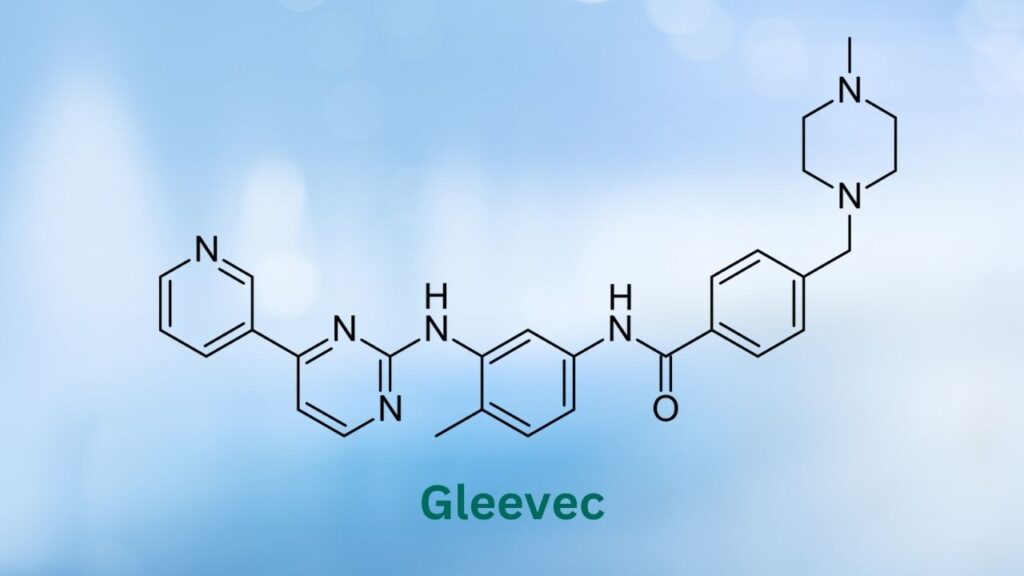Benadryl is an inexpensive, over-the-counter antihistamine medication that may be useful to enhance the effectiveness of current cancer therapies and to manage side effects in some dogs.
Key Takeaways
- Before administering Benadryl or any other medication to your pet, it is always best to consult with your veterinarian.
- Benadryl is an antihistamine that is used in dogs for the treatment or prevention of allergic reactions, itchiness, skin disorders, mast cell tumors (along with other therapies), motion sickness, sedation, and anxiety (such as for travel or thunderstorms).
- Oral Benadryl takes about 30 minutes to an hour to take effect in most dogs.
- If a dog receives too much Benadryl, you may see side effects like excessive sedation, vomiting, diarrhea, agitation, tremors, anxiety, aggression, uncoordinated movement, or seizures.
What Is Benadryl?
Benadryl® is an antihistamine, which means it counteracts histamine. Histamine is a compound released by white blood cells into the bloodstream when the body is defending against an allergen. (There are other roles for histamine in the body, as well, but in this article, we are focusing on the role of histamines in allergies.)
Benadryl turns down the activity of histamines by blocking their ability to bind to one of the receptor types that typically receive histamine. The H1 receptor is one of four different histamine receptors in the body. In humans, the H1 receptor is commonly found on immune cells known for causing allergies.
Brand Names
Diphenhydramine can be purchased as Benadryl or in many generic forms. A veterinary formulation comes as a flavored tablet called Vetadryl®.
How Benadryl Works
To suppress allergies in humans, Benadryl blocks the activation of the H1 receptor. Interestingly, this is not always an effective allergy treatment in dogs, as many of their seasonal and food allergy reactions are caused by a different mechanism.
That said, Benadryl is used in dogs to prevent allergic reactions. For example, we may give antihistamines to prevent allergic reactions before receiving vaccines or chemotherapeutic drugs.
The mechanisms of how H1 antagonists such as Benadryl might help treat cancers are still being explored, but it involves the immune system response.
Studies Looking at Antihistamines and Cancer
A recent report in Cancer Cell took a retrospective look at cancer patients who took antihistamines while undergoing immunotherapy cancer treatments.1 This report looked back at patients who underwent treatments and tried to find associations.
The antihistamines that people took included fexofenadine, loratadine, and cetirizine.
Note: These “second generation” histamines may use different mechanisms to reduce histamine than the “first generation” antihistamine Benadryl. Even so, it’s worth looking at histamine and cancer in general for the purposes of this article.
Here’s what the retrospective study found.
- Melanoma and lung cancer patients showed a statistically significant improvement in survival.
- Breast and colon cancer patients had a trend toward improved survival, meaning the statistics did not work out to be significant, but the data was promising.
The researchers then used animal and cell models to test how this benefit might have been achieved.
This finding was supported by a second retrospective study from a different research group that sought to compare different types of antihistamines in combination with immunotherapy. However, this group only found a benefit with desloratadine, cyproheptadine, and ebastine, known as cationic amphiphilic drugs.
A third retrospective study from another independent group looked exclusively at melanoma and found improved overall survival in those taking cetirizine with a type of immunotherapy called anti-PD1 therapy.2
A large retrospective study compared outcomes of immunogenic and non-immunogenic cancers in patients using several different antihistamines and found the strongest effects in immunogenic cancers, suggesting again that an immune-related mechanism is at play.3
The next step will be to do a “prospective” study, where patients receiving immunotherapy can be randomized into double-blind trial groups to see if antihistamines can really improve outcomes.
Other Theories
There are other proposed mechanisms by which antihistamines might enhance the effectiveness of cancer treatments.
It has been proposed that a subclass of antihistamines known as cationic amphiphilic drugs (CAD) may have effects on cancer cells that sensitize them to chemotherapies, either by disrupting functions inside the cells to help directly induce cell death or by helping to keep the cancer cells from pumping the drug out, which many cancer cells gain the ability to do over the course of a treatment.4
The differing results of these studies should not be surprising. They are retrospective studies that have a lot of variability, but the results are promising for antihistamines benefiting cancer patients.
Remember, however, that none of these studies specifically included diphenhydramine (Benadryl), so we can’t directly draw conclusions about using Benadryl for dogs with cancer.
Dr. Nancy Reese explains how Benadryl used alongside Tagamet may help manage histamine overload in some dogs.
Common Uses of Benadryl for Dogs
Benadryl is often used to prevent reactions that dogs might get in response to allergens such as bee stings or vaccines and may also be used to prevent allergic reactions to chemotherapeutic drugs.
Benadryl can be helpful for dog anxiety because of its mild sedative effect and may also help dogs sleep.
Benadryl for Dogs with Cancer
Benadryl is frequently used to relieve symptoms of mast cell tumors and to decrease swelling and itchiness.
The promise of antihistamines seems strongest in cancers with a strong immune component, and which are often treated with immunotherapies (these are sometimes called immunogenic cancers). This is a reason Benadryl is commonly given to dogs with mast cell tumors. The granules of mast cell tumors contain histamines, and histamine release from mast cell tumors can cause issues with vital body functions such as heart rate and blood pressure.
Benadryl is not a direct treatment for the tumor. Instead, it eases discomfort caused by excessive numbers of mast cells, such as swelling and redness. Benadryl will block the release of histamines throughout the body.
Benadryl or other antihistamines are still in the experimental stage for other cancers, whether in humans or dogs. It will most likely be paired with chemotherapy or immunotherapies to enhance their effectiveness rather than used alone.
Retrospective clinical studies have examined the benefits of H1 antihistamines in combination with other therapies in melanoma, lung, breast, colon,1,3,5 and ovarian cancer.6
Veterinary oncologist Dr. Brooke Britton explains how degranulation events happen and how to handle them.
When to Not Use Benadryl
Benadryl should be used with caution in patients with:
- liver disease
- hyperthyroidism
- seizure disorders
- cardiovascular disease
- hypertension
Caution should be used when combining Benadryl with other antihistamines or drugs that can cause drowsiness.7
Benadryl for Dogs
Diphenhydramine, the scientific name of Benadryl, has a long history of safe use in dogs.
If using Benadryl over the counter for a dog, it is essential to be aware of which formulation you are purchasing and confirm that it does not have other active ingredients, such as decongestants.
Also, check for the sweetener xylitol, which is toxic to dogs. Xylitol may also be listed as birch sugar, so avoid formulas that contain that ingredient, too.
Benadryl is available as a pill, liquid, or topical cream intended for human use, so it is essential to consult a veterinarian to determine the best type and dose for your dog. Veterinarians may inject the drug at the clinic, usually to control an acute allergic response.
Dosage
Use Benadryl in consultation with your veterinarian because you do not want to overdose your dog with Benadryl, and not every dog should use Benadryl.
Dosing will likely be done at home every 8 to 12 hours by mouth, only as needed.
According to the Merck Veterinary Manual, the standard dose for Benadryl is 2-4 milligrams per kilogram of body weight.8 This equals approximately 1 mg of Benadryl per pound of body weight.8
Before administering Benadryl or any other medication to your pet, it is always best to consult with your veterinarian.
What If I Miss a Dose?
Do not give two doses at once. It is safer to take the dose late or wait until the next dose is due.
Storage and Handling
Benadryl tablets can be stored at room temperature, away from moisture.
Safety and Side Effects of Benadryl for Dogs
Diphenhydramine has a long and safe history of use in dogs.
Side effects can include:9
- dry mouth
- hypersalivation
- drowsiness
- rapid breathing
- increased heart rate
Rare side effects might include diarrhea, vomiting, and changes to appetite.
Signs of overdose can include:
- dilated pupils
- rapid heartbeat
- agitation
- constipation
- seizures
If you see signs that your dog is in distress, stop giving Benadryl and contact your veterinarian. If you see the severe signs of overdose listed above, seek emergency veterinary care immediately.
- Li H, Xiao Y, Li Q, et al. The allergy mediator histamine confers resistance to immunotherapy in cancer patients via activation of the macrophage histamine receptor H1. Cancer cell. 2022;40(1):36-52. e9.
- Mallardo D, Simeone E, Vanella V, et al. Concomitant medication of cetirizine in advanced melanoma could enhance anti-PD-1 efficacy by promoting M1 macrophages polarization. J Transl Med. Sep 30 2022;20(1):436. doi:10.1186/s12967-022-03643-w
- Fritz I, Wagner P, Olsson H. Improved survival in several cancers with use of H1-antihistamines desloratadine and loratadine. Translational oncology. 2021;14(4):101029.
- Ellegaard A-M, Dehlendorff C, Vind AC, et al. Repurposing cationic amphiphilic antihistamines for cancer treatment. EBioMedicine. 2016;9:130-139.
- Chiang C-H, Chiang C-H, Peng C-Y, et al. Efficacy of cationic amphiphilic antihistamines on outcomes of patients treated with immune checkpoint inhibitors. European Journal of Cancer. 2022;174:1-9.
- Verdoodt F, Dehlendorff C, Jäättelä M, et al. Antihistamines and Ovarian Cancer Survival: Nationwide Cohort Study and in Vitro Cell Viability Assay. JNCI: Journal of the National Cancer Institute. 2019;112(9):964-967. doi:10.1093/jnci/djz217
- Benadryl. Veterinary Information Network. https://www.vin.com/members/cms/project/defaultadv1.aspx?pId=13468&id=7397799&f5=1. Published June 2017. Accessed January 3, 2023.
- Table: Antihistamine dosages. Merck Veterinary Manual. https://www.merckvetmanual.com/multimedia/table/antihistamine-dosages. Accessed April 14, 2023.
- Hofmeister EH, Egger CM. Evaluation of diphenhydramine as a sedative for dogs. J Am Vet Med Assoc. Apr 1 2005;226(7):1092-4. doi:10.2460/javma.2005.226.1092
Benadryl® is a registered trademark of® is a registered trademark of Johnson & Johnson0
Vetadryl® is a registered trademark of Pegasus Laboratories, Inc.
Topics
Did You Find This Helpful? Share It with Your Pack!
Use the buttons to share what you learned on social media, download a PDF, print this out, or email it to your veterinarian.









